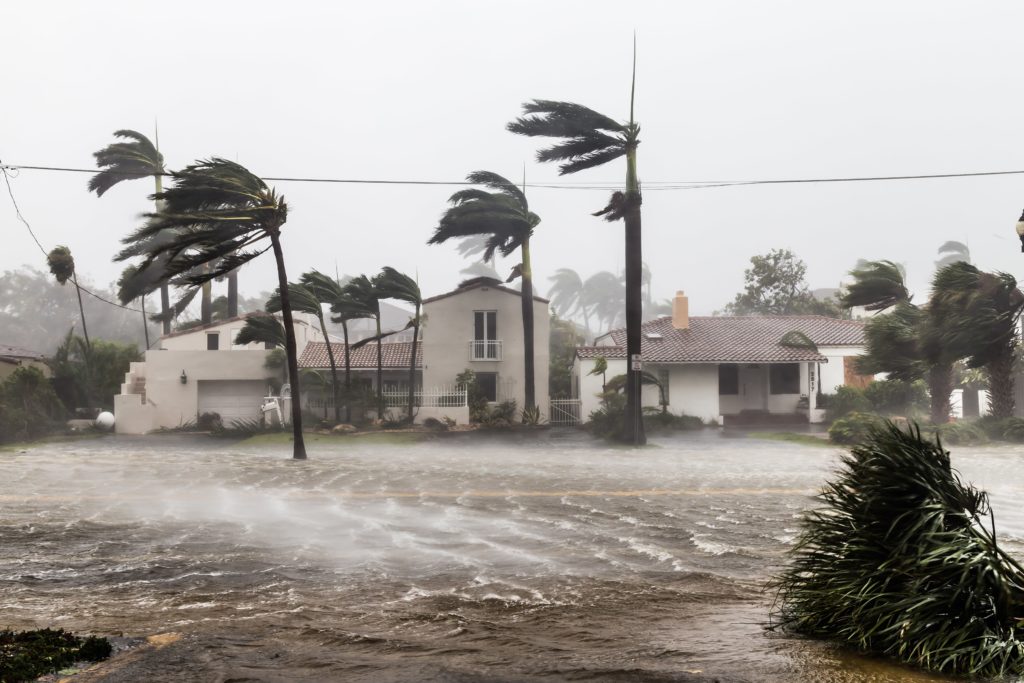If you live in Florida, you’ve probably got some experience of extreme winds during hurricane season. Your home will have been at risk at some point, of damage, flooding, and power outs, and your roof is probably something of a concern.
In other places around the world, people give very little thought to the materials used in the construction of their roof. They experience no more than a light storm here and there, which a standard roof has no trouble defending against. But, if you do live in an area which is prone to hurricanes, you’ll know just how important it is to protect your home, the people in it and your possessions with the best roof material for hurricane winds.
There are some specialist materials that we can use to protect our homes during the windy season, but knowing which one is the right choice can be complicated. Here’s a look at some options for the best roof material for Florida to help you to make your choice.
Metal
When it comes to the best roofing material for hurricane winds, metal is best. It looks stylish, is relatively easy to install and maintain, and offers unparalleled protection from high winds and harsh rain.
Metal roofing is exceptionally durable and able to comfortably withstand winds of up to 160mph before you need to worry about damage. It has the advantage of being in much larger pieces, or even one singular piece, as opposed to the smaller pieces that make up a tiled roof. This makes it far sturdier and substantially harder to dislodge. Metal roofing is available in exposed fastener, hidden fastener, and stamped options. Get in touch with us today if you’d like to know more about your metal roofing options.
Asphalt Shingles
Asphalt shingles are very common because they tend to be the most affordable option. However, most standard three-tab shingles can only withstand winds of up to 70mph, making them a high-risk roof material for Florida.
They may be more affordable in the first instance, but their cheap design and manufacture leave them far more likely to be blown off your roof in anything more than an average storm. This can lead to costly repairs and replacements and perhaps even further damage to home. The upfront costs of asphalt shingles may be appealing, but long-term, the costs can stack up.
Wood Shingles
Wood shingles are a durable option for hurricanes because they can withstand high winds very well. But, they don’t last for as long as other options, and it often takes a lot of work to keep them at their best. Wood shingles can require extensive maintenance, and even then hurricanes will decrease their lifespan.
Slate Tiles
Slate tiles are hefty and durable, which can make them ideal for a home that faces hurricanes and other harsh weather conditions. Their weight and rigidity make it very hard for wind to get underneath them. But, these sturdy tiles can be very expensive, and you’ll need a roofer with experience working with slate to fit them.
Conclusion
If you want your home to have the very best protection from hurricanes, you can’t beat metal. It’s simple but strong and exceptionally durable. Particularity advantageous if you live in a hurricane area, or around a forest and need some extra shielding.
Other Considerations
Of course, the material that you use isn’t the only thing that will protect your home from hurricanes.
Roof Shape and Pitch
If your roof has multiple slopes, it will usually fare better during hurricane season. The shape will offer extra shielding, and a hip roof with four sides is generally considered a safer bet than a gable roof with two.
The pitch of your roof is another important factor. Thirty degrees is often thought of as the perfect pitch in high winds. Roofs with lower gradients tend not to handle rain as well, and steeper roofs are more susceptible to damage during high winds.
Fasteners
In Florida, and other hurricane-prone areas, staples should never be used to fasten roofs, as they just aren’t strong enough. Nails are a much better option for fastening roofs, and straps should be used to secure wall studs and rafters.
Notched Frieze Board
A frieze board is attached to both the roof and the wall, to bridge the gap between the two. This stops any wind, which could potentially lift the roof from the wall, from getting in. A notched frieze board will also prevent wind-driven rain entering the structure of the home, so preventing further damage.
If you are looking to add extra protection to your home, get in touch with RPS today for a free estimate. We offer the highest quality materials at the very best prices and protect the future of your home with our excellent warranty scheme. So get in touch with one of our friendly advisors today at sales@rpsmetalroofing.com or on (386) 222-6779 to discuss your needs.


One comment
Zachary Tomlinson
October 18, 2021 at 8:56 am
Thanks for explaining how metal roofing can protect your home because it can withstand strong winds. My brother mentioned that he wants to boost his home’s storm-proofing. I’ll share this info to help him understand the benefits of metal roofing.